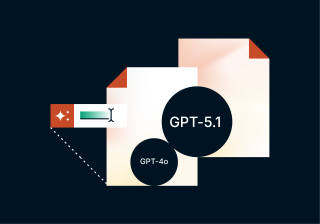Introducing Clause Companion
Our position right now
Since the start of the year when we announced our new company identity, we've been working on a strong push to re-introduce ourselves to customers, research how the market has been changing, and understand how we can better respond to its needs as a consolidated vendor.Part of the advantage of our new company identity is the new software products we're bringing to the table. We have more people than ever before available to discuss where we can deliver the most value to our customers.But for me, the most exciting part of this change isn't what we have right now; it's what we're going to do and how we're going to make the most of our new position. And some of that is building new products.
What we're hearing from customers
Our conversations with customers haven't been solely about us as a consolidated vendor and what we can offer. The best way to understand how products should evolve is to listen to customers and understand the market problems that we haven't fully addressed.In particular, we have strong document assembly software, which accelerates the production of first drafts. However, we're learning that the majority of a lawyer's time is spent with a document that has already been produced. Because of this, it can be difficult to bring lawyers value from a document assembly tool.For law firm partners, it is important for their lawyers to use the most recent version of contract terms to reduce business risk. Most of the firms we work with have teams of Knowledge Management professionals working to make sure precedents and standard terms align with current business need.Staying up-to-date with precedents and standard terms is more important than simply removing outdated language from circulation. It also:
- protects against changes to terms, conditions, and pricing as well as regulatory compliance issues
- avoids human errors that occur during manual entry
- provides guidance when clauses have multiple variants and gives a strong outward-facing position to clients and outside counsel.
A common challenge for Knowledge Management teams is preventing lawyers from reusing documents, while lawyers want to refer back to these familiar documents and get a look and feel that is similar to what they've delivered to clients in the past.Generating a pre-designed template and filling it in provides consistency in appearance, but opening a familiar document is a common need. Once a document is produced, the lawyer might also put it into house style, or they will send it to a support lawyer, who will have to manually convert the document into the correct house style, a heavily manual process that puts a lot of stress on the team.To get contracts drafted right the first time, lawyers need help entering the correct clauses and styles themselves before passing it along.
Introducing Clause Companion
We took advantage of the resources we had available and built the first version of Clause Companion. We utilized a development team familiar with producing high quality document assembly software, a document production engine that was tried and trusted by over a hundred law firms, and a motivated team of ex-lawyers, knowledge management professionals, and IT trainers who had gone through the issues we were addressing.We showed it off at Legaltech 2018 in New York and got the feedback we needed; that the concept made sense and helped to address the problem.Then it was a case of improving product quality and assessing the user interface to make sure it addressed the problem in a way that lawyers would actually use. When you measure your time in six-minute increments, navigating an unfamiliar interface or moving away from Microsoft Office is something that costs the firm money. As we've talked about before, it was important for us to keep this process within Microsoft Word to save time, reduce task-switching, and limit the learning curve of new software.The second version of Clause Companion is a clause library that allows for simple storage, retrieval, and distribution of clauses and approved language. If you dig enough, lawyers will tell you that they store their favorite language somewhere - it might be a Word document or an Outlook email draft - so that they can access clauses or phrases they've used successfully in the past.That might not always be necessary - the knowledge management team may have drafted a clause that addresses exactly what the lawyer is looking for with current best practice for regulatory compliance. However, if the lawyer is only looking in one place for their preferred language (their draft emails), then this new language will escape them.We didn't want to just create another mechanism for knowledge management teams to distribute preferred clauses; instead, we wanted to create a tool lawyers can use for all their clauses ' both those that they used in the past and those that have been created by their knowledge management team.Want to learn more about the benefits of Clause Companion? Join us for our webinar May 8, 2018 at 10:30am CT. We will be available after the call to answer any of your Clause Companion questions.




